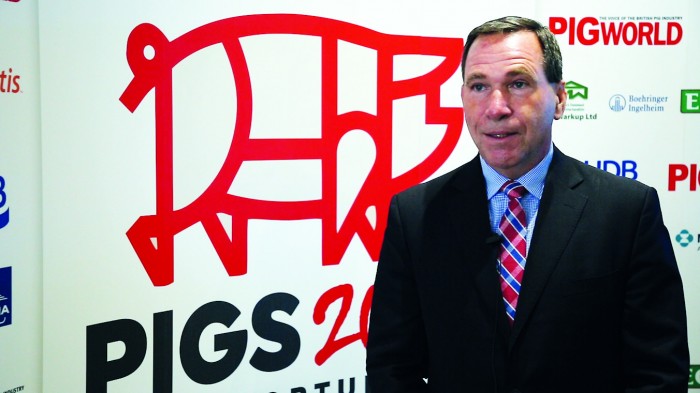Nick Giordano vice president and counsel, global Government affairs, with the National Pork Producers Council in the US provides an international outlook on the pork market.
At the start of 2020, US pork producers were optimistic about the year ahead. Mexico’s retaliatory tariffs on US pork had been removed, the U.S.-Mexico-Canada (USMCA) trade agreement would soon be in force and a new trade deal with Japan had placed US pork back on a level competitive playing field in this vital market.
After two years of trade retaliation, US pork producers entered 2020 with profits in mind and the wind at their back. By March, however, hog farmers were facing gale force winds in the form of the COVID pandemic. It was a black swan event for the global economy, unleashing never-before-seen challenges on hog farmers and the entire pork supply chain.
At the peak of the COVID crisis, US pork harvest facility capacity was down approximately 40%. It was catastrophic, resulting in the need to euthanise animals intended for the food supply to prevent suffering due to overcrowding on farms. It also resulted in devastating financial losses.
Due to major, industry-wide worker safety practices and investments—collectively more than $1.5 billion across U.S. meat processing facilities—and a better understanding of COVID, US pork processing plants have since been operating at more than 95% of capacity on a sustained basis. American hog farmers and the US pork production system demonstrated incredible resilience over the last year; the promise of profitable growth has been restored and the outlook for hog prices is favourable. The National Pork Producers Council, the global advocacy voice for American hog farmers, is focused on a wide range of issues to support this growth. Expanding export market access is always a top priority.
Let’s consider China, a country that has struggled to contain African swine fever, which has ravaged its domestic swine herd. China’s demand for affordable pork has never been greater, creating an unprecedented sales opportunity for U.S. pork.
Unfortunately, US pork faces a collective 33% import tariff in China, placing it at a significant competitive disadvantage to competitor nations, which face duties of 8%. Even without the need created by ASF, China is an important export market for US pork producers.
That’s why NPPC will continue to work for the removal of China’s punitive tariffs on US pork imposed as retaliation against US tariffs on China’s steel and aluminum.
It is difficult to unwind tariff wars, but we are heartened that the Biden administration is leveraging relationships with US allies, including collaboration with the United Kingdom and European countries, in its China-relations strategy.
UK free trade agreement
While NPPC supports the resumption of free trade agreement negotiations between the United States and the UK, the congressional deadline for the administration to sign a free trade agreement with the UK has lapsed.
Given the Biden administration’s near-term focus on the COVID pandemic and economic recovery, and because Trade Promotion Authority is not expected to be renewed this year, a US-UK. trade deal is unlikely to advance this year.
Once US-UK. trade negotiations resume, NPPC will continue to urge for the elimination of all tariff and non-tariff barriers, and for the U.K. to embrace CODEX and other international production standards.
The UK’s commitment to moving away from the European Union’s non-science-based approach to food production standards is unclear. The UK purchases approximately $2.5 billion (£1.8bn) of pork each year, making it one of the world’s top importers. US pork exports to the UK were only $3.3 million (£2.2m) in 2020.
- This article was taken from the May issue of Pig World magazine which you can subscribe to here.




